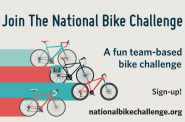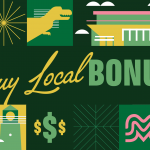Big Cuts in Bicycle Funding Likely
Federal and state funding for bicycle transit could be slashed by as much as 50 percent.
In order to figure out what the future of funding for bicycling looks like for Wisconsin, I have to reconcile the new federal two-year transportation budget MAP-21 (Moving Ahead for Progress in the in the 21st Century), with the Wisconsin Dept. of Transportation’s biennial budget request for 2014-2015 and the insights Wisconsin Transportation Secretary Gottlieb shared about the preliminary recommendations from the Wisconsin Transportation Finance and Policy Commission.
Federal two year transportation budget 2013-2014
- 30% cut in state funding for bicycle and pedestrian projects
- 50% of bike funds can be directed to highway projects
- Governors can opt out of the recreational trails program and put use those funds for highways
As I reported in August, MAP-21 combined the Transportation Enhancements, Recreational Trails, Congestion Mitigation Air Quality and Safe Routes to Schools programs into one 30% smaller program called Transportation Alternatives. MAP-21 also divided the TA program so that 50% of the money states get must be distributed by the Metropolitan Planning Agencies that oversee population centers of 200,000 or more and the remaining 50% would be distributed to the rest of state through a competitive grant program of some kind. MAP-21 maintained a required 20% local match required under the TE, Rec Trails and CMAQ programs. It also added that 20% match to the SRTS program, which used to be 100% funded under the previous federal transportation budget. Finally, MAP-21 also allows states to opt out of the recreational trails program. The Bike Fed lobbied in support of Rec. Trails, and Gov. Walker has agreed not to opt.
State Biennial Budget 2014-2015
It is no easy task to coming up with an accurate picture that allows us to compare how much Wisconsin has spent on bicycle and pedestrian programs in the past, what is available from the feds, and what the departments have requested for the future. To create the admittedly flawed spreadsheet below, I dug through the most recent 2013-2015 WisDOT and WDNR biennial budget requests as well as about a dozen websites, including the Federal Highway Administration, the League of American Bicyclists, Advocacy Advance, the Transportation Enhancements Clearinghouse, and many others.
I sent the spreadsheet above to the budget folks at the Wisconsin Dept. of Transportation and asked them to fill in the missing data and correct any bad information I may have. They were very cooperative, but did not have the information at their fingertips. They promised to get me their funding information in the coming days. As soon as I get their more accurate information, I will share it here.
There has been some early discussion on the Madison Bikies email listserv that the Wisconsin may zero out bicycle funding. As you can see by the chart, everything I have learned so far says that is not true. At this early stage, it looks like Wisconsin will have about half of what it has allocated for bicycle and pedestrian programs in the past, but like I said, these numbers are very preliminary.
Stay tuned to this blog for more accurate data and a further discussion of the implications of the bicycle program budgets next week.
This story was originally published by the Bicycle Federation of Wisconsin.
Bike Czar
-
Join a Bike Ride Under the Polish Moon
 Jun 1st, 2018 by Dave Schlabowske
Jun 1st, 2018 by Dave Schlabowske
-
9 Reasons to Join National Bike Challenge
 May 4th, 2018 by Dave Schlabowske
May 4th, 2018 by Dave Schlabowske
-
Biking Through the Mindoro Cut
 Apr 27th, 2018 by Dave Schlabowske
Apr 27th, 2018 by Dave Schlabowske






















The investment cost to payback ratio of bike infrastructure can probably not be overstated. It’s such a cheap and effective transportation system. Yet somehow politicians see it as the first thing to go when looking to slash budgets. The debt hand-wringers should be the biggest supporters of this fiscally sound, sustainable transportation strategy. Remember, much like a stock portfolio, a transportation network works best when it’s diversified.
When did the federal government also get a highway fetish? Walker’s attraction to them always made sense if you followed the money. I’m having a hard time believing there are road builders also paying off a significant percentage of Congress…
“Governors can opt out of the recreational trails program and put use those funds for highways”
Walker is dumb enough to do this.
Can someone with some connections please forward this article to the guys at Trek? They actually have the ear of the governor and *could* make a difference.
Discouraging. Garrick, “fetish” is the right word when it comes to highway funding.